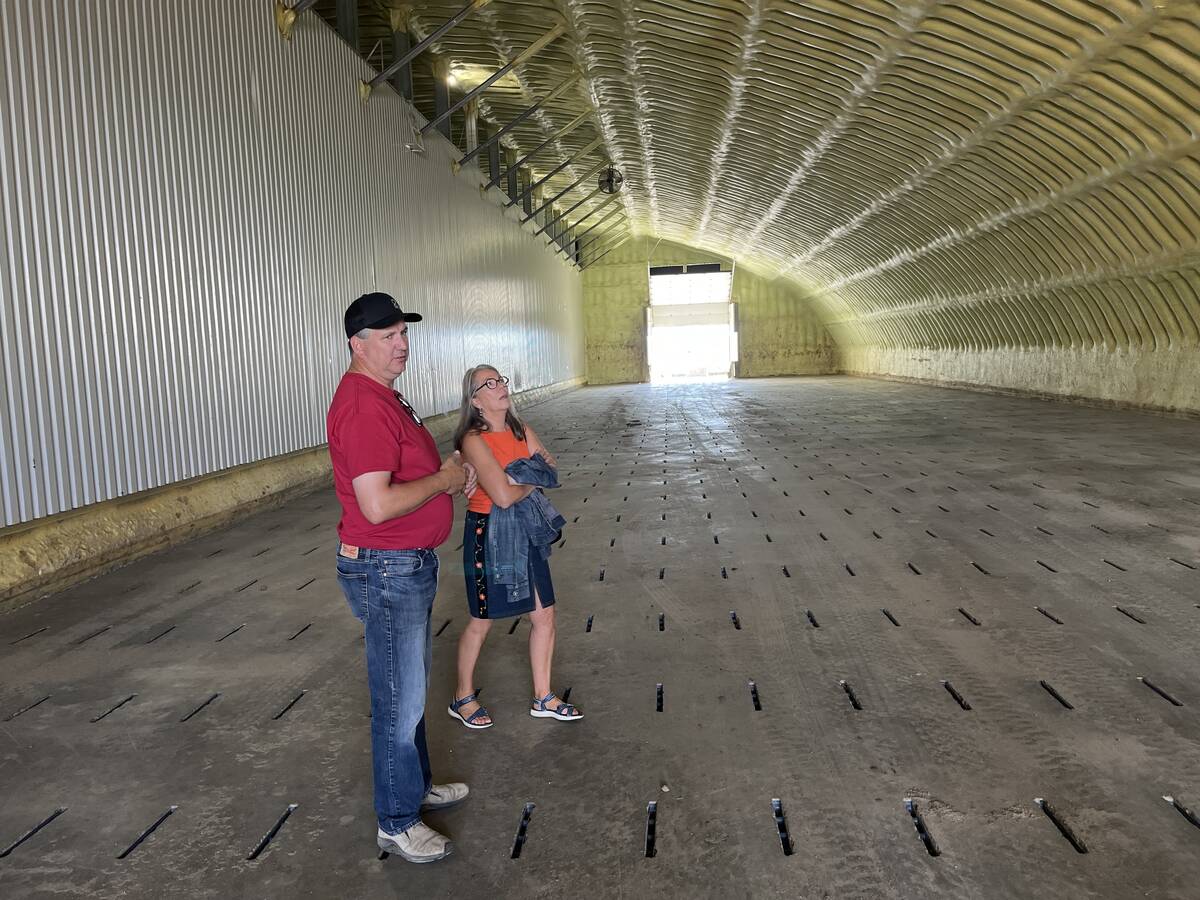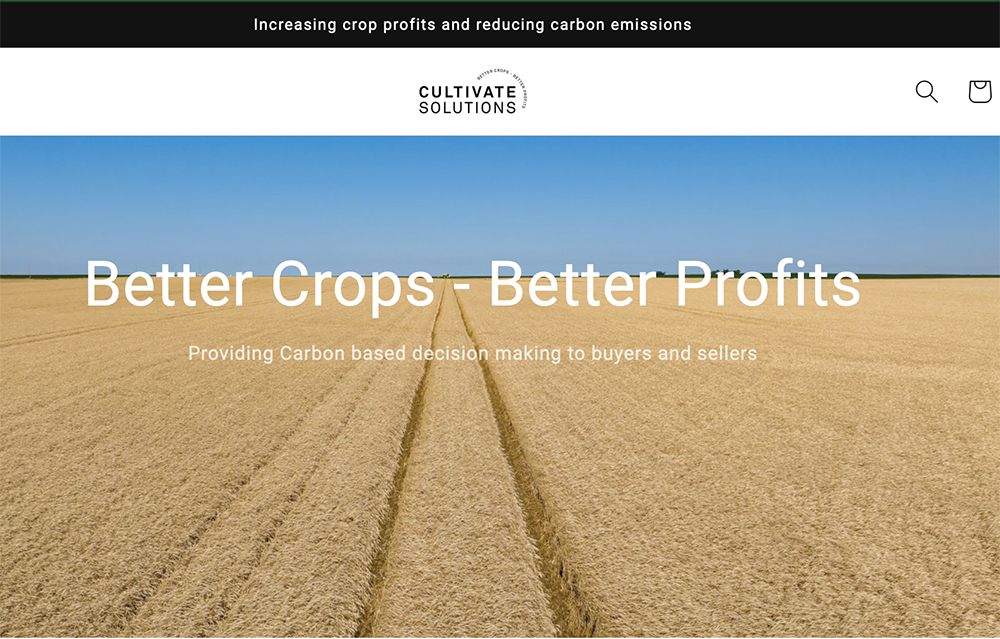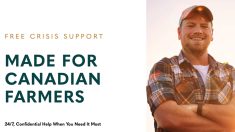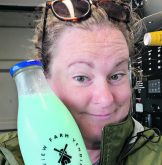You can’t sell something that you don’t have. But if you have canola with an ISO-certified low carbon footprint, it can fetch you an extra 25 cents per bushel premium.
There are three parts to this scenario. First, you need to grow the low carbon crop. Next, you need documentation to certify that it meets ISO standards.
Finally, the low carbon footprint food must be identified and promoted as such throughout the food chain, right up to the grocer’s shelves. Concerned carbon-conscious consumers can put their money where their mouths are, so to speak.
Read Also

Potato farm requires year-round management
The most recent Open Farm Day in Alberta showcased agricultural producers across the province educating the general public about the process that is required is to get food to their table.
That’s where Boyd Koldingnes and his new company enter the scene. Koldingnes is a founding partner in CultivateCI, a startup designed to score carbon in the field and in the harvested crop.
In the fight to reduce carbon emissions, this a new link between grower and consumer. It gives consumers a rare opportunity to vote for C02 reduction with their grocery list and their dollars.
Koldingnes explains that CultivateCI provides a pathway for an identity-preserved low C02 wheat crop to carry that distinction from the field to the label on the grocery store shelf. The consumer is offered the opportunity to buy bread with a low carbon footprint, or buy traditional bread that’s been grown with a standard carbon footprint. Koldingnes says the system has nothing to do with carbon credits or carbon offsets.
“The strategies behind carbon credits and carbon offsets are flawed. These systems are very difficult to deal with administratively,” said Koldingnes in a phone interview, adding that both systems are losing their appeal.
“CultivateCI has a narrow focus. We give a farmer the means to measure and certify low carbon crops on his farm. We connect buyers and sellers to showcase sustainable farming practices at work. The premium provided to the farmer is a financial incentive to adapt more sustainable practices. We facilitate the introduction of low carbon food into the food chain. To make this work, we’ve created a comprehensive audit process and a carbon scale.”
He explains the system is like a scorecard that helps the grower attract better prices, based on reduced environmental impact of a specific crop in a specific field. A grain buyer checks the scorecard on-line to verify he’s buying a low carbon crop. That crop will be labelled as such from farmgate to the end-users table.
He notes that grain originators typically work with their existing farmer base. CultivateCI breaks that traditional model by opening the door standing between originators and growers. All parties in the system have access to the scorecards.
“We can source spot bids among all members based on crop quality and the carbon intensity score. Buyers can source the kind of sustainably grown grain that consumers are demanding today. In doing so, they commit to improving their environmental footprint by utilizing our proprietary model to access low-carbon certified grain and bringing it to market.
“I’ve talked to ethanol producers who are paying 50 cents per bushel for low carbon jet fuel. Low carbon canola crush is 15 cents to 25 cents.”
Koldingnes says the system was developed in conjunction with Australian scientific firm FlintPro, which did the research and produced the algorithms. This data was essential in gaining ISO and ISCC approval. CultivateCI can create a carbon footprint report that measures every GHG factor on the whole farm, or it can create a report that deals with only one field.
The working model is more like a ledger than Excel. Every time you write something in Excel you erase the previous number. With the CultivateCI ledger, you write a number, but it saves previous entries. It doesn’t erase the transaction. It creates a history of everything in that field starting from the day a grower enlists, an important factor in documenting the carbon footprint.
From day one on the system, CultivateCI tracks everything that happens on a target field. Fall cultivation after last year’s harvest is a factor in the current year’s footprint, so that cultivation pass is entered as a negative point. However, planting winter wheat into canola stubble last fall is a definite positive in this year’s ledger. Drilling in this year’s seed and fertilizer with a single pass and no seedbed prep is always considered a major positive point.
Broadcasting granular fertilizer at any time of the year is a big negative, especially if followed by a harrow pass. It might be a big enough taboo to boot the target field out of contention for certification. But if every other category is ranked high, the broadcast application might pass scrutiny. A contract runs from harvest to harvest. Scoring for 2024 begins at harvest 2023. Every field operation from fall of 2023 will apply to the 2024 contract
The model differs from other systems because it includes a proprietary calculator and predictive modelling that helps producers make the most informed decisions regarding their environmental impact and score. He says growers who are certified 4R farmers will rank higher on the carbon intensity scorecard.
“We have no boots on the ground. No mandatory soil tests. The grower keeps records of every procedure in a specific field. We verify much of what happens on the ground with satellite images. If a farmer is aligned with BMP and 4R, there’s already a high element of trust involved here. For the most part we use records and information a farmer logs anyway.
“For example, I might decide I need another fungicide pass. But that’s a lot of diesel burned and chemical produced and sprayed. That alone might be enough to kick that specific field out of the program. However, I may need that fungicide to save the crop. All these management decisions remain in the hands of the grower and Mother Nature.”
He offers a hypothetical example of how it might work. Walmart might talk to a grain company telling them that by 2025 it plans to have a complete section dedicated to low carbon footprint food, including vegetable oil. The grain company then talks to its buyers and originators to see if the demand for low carbon canola can be met. A deal is made and a CultivateCI contract it signed.
“But what if that’s the field with your good-looking canola crop that needed one more application of fungicide. Depending on how the field ranked in other factors on the scorecard, the field might still stay in the program or it might get booted you out of the deal. The integrity of the system is vital. If the consumer sees low carbon footprint on the label, then it better be true low carbon food. Consumers vote for a better planet with their grocery list and their dollars.”
In this hypothetical case, Walmart pays the grain company a higher price for low carbon canola oil. The grain company passes this on by paying the farmer a higher price for his certified low carbon canola crop. The farmer only pays one annual fee of $2,000 to be on the system. That annual fee covers everything from a 40-acre field, up to thousands of acres. There is no upper limit to the number of fields covered by the single annual fee.
There is no commission on sale of grain, no matter how large. The premium is paid by the grain company to the grower. The grocer pays the grain company a higher price, which is passed on to the retailer. Once the product is in the grocery store, the consumer pays the bonus. In this way, the consumer pays the farmer for his sustainable low carbon farming practices.
CultivateCI takes its profit from the grain buyer, and ultimately from the consumer.
For more information contact https://cultivateci.com/.


















